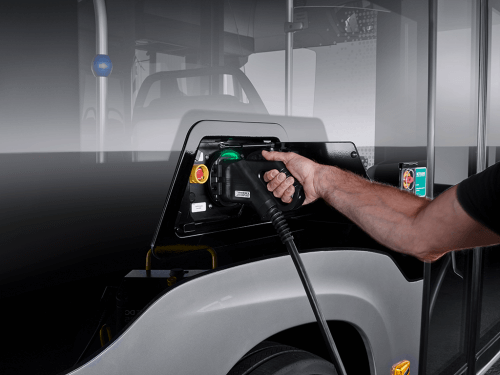
Plans include a £48m ultra low emission bus funding round
The Government last week published its Road to Zero strategy, outlining the ‘next steps towards cleaner road transport and delivering our Industrial Strategy.’
The 143-page document sets out a range of new measures to support the design and manufacture of zero-emission vehicles, which add up to almost £1.5 billion worth of investment.
Key measures outlined in the report include:
• Increasing the supply and sustainability of low carbon fuels in the UK through a legally-binding 15-year strategy to more than double their use, reaching 7% of road transport fuel by 2032;
• Making the biggest increase in public investment in R&D in our history (towards a target for total R&D investment of 2.4% of GDP by 2027) and increasing the rate of R&D tax credit to 12%;
• Fulfilling a £48m ultra low emission bus scheme funding round to accelerate uptake and deployment of supporting infrastructure;
• Extending the Clean Vehicle Retrofit Accreditation Scheme (CVRAS) beyond buses, coaches and HGVs to include vans and black cabs; and
• Launching a call for evidence on particulate emissions from tyre, brake and road wear to improve understanding of these emissions and consider options for how they might be reduced.
As expected, the plans attracted a great deal of feedback – both positive and negative – from industry figures and organisations.
Independent low-emission vehicle research and consultancy organisation, Cenex, said of the report: “We welcome the launch of the Road to Zero strategy and are pleased to see an increased focus on charging infrastructure as well as its impact on the energy system.
“At Cenex we are already actively involved in demonstrating how electric vehicles can add value to the grid and generate additional benefits to both vehicle owners and charging locations via the use of smart and bidirectional (V2G) chargers.
“We particularly welcome that the strategy incorporates light and heavy commercial vehicles including taxis, delivery vans and logistics fleets. Our decision support tools are already being used to assist local authorities and businesses to plan for the wide-scale adoption of EVs, while we also work closely with local authorities on charging infrastructure planning.”
Meanwhile, Dr Jon Lamonte – Chief Executive of Transport for Greater Manchester and Urban Transport Group lead board member for air quality – said the initiatives outlined in the report would struggle to deliver results in the short term: “The Government’s Road to Zero strategy is heading in the right direction, but at the wrong speed.
“We need to act far sooner than 2040 to ban conventional vehicles if we are to improve air quality within our cities. The lack of incentives to discourage people from using conventional cars – particularly diesel vehicles – will also make it more difficult to reduce emissions.
“Government must go further and faster if we are to reach our desired destination of clean road transport.”
LowCVP’s Managing Director, Andy Eastlake, remained upbeat about the report, however, welcoming the idea of partnership being ‘at the heart’ of the Government’s low-emissions strategy: “There’s every reason to believe that the Road to Zero objectives can not only be achieved, but significantly surpassed. ‘Effectively zero emissions’ by 2040 is 22 years away, so we welcome the push for most of the fleet to be ULEVs by 2030.
“This revolution in mobility and in the technologies we use to get us around can only be achieved if people – government, businesses and householders – work together and pull in the same direction. The strategy helps by focusing us all on where we need to get to and, importantly, also includes some interim steps.”
Greener Journeys’ Chief Executive, Clair Haigh, called the plans ‘disheartening’: “It’s disheartening to see that having promised to take bold action to reduce emissions and solve the UK’s air pollution crisis, the Government has failed to take the necessary tough decisions. It has still done nothing to reduce the sheer number of vehicles on the road.
“Cars are the number one cause of roadside air pollution, which has reached illegal levels and is causing up to 50,000 early deaths per year. We cannot solve this crisis without reducing car use.
“We urgently need measures to encourage a switch from car to public transport. For a start, the Government should end the freeze in fuel duty which has led to a 4% increase in traffic since 2011. The Treasury’s own figures show that the ongoing fuel duty freeze cost the exchequer an estimated £46 billion between 2011 and 2019 – more than twice the amount spent on NHS doctors and nurses each year.”

